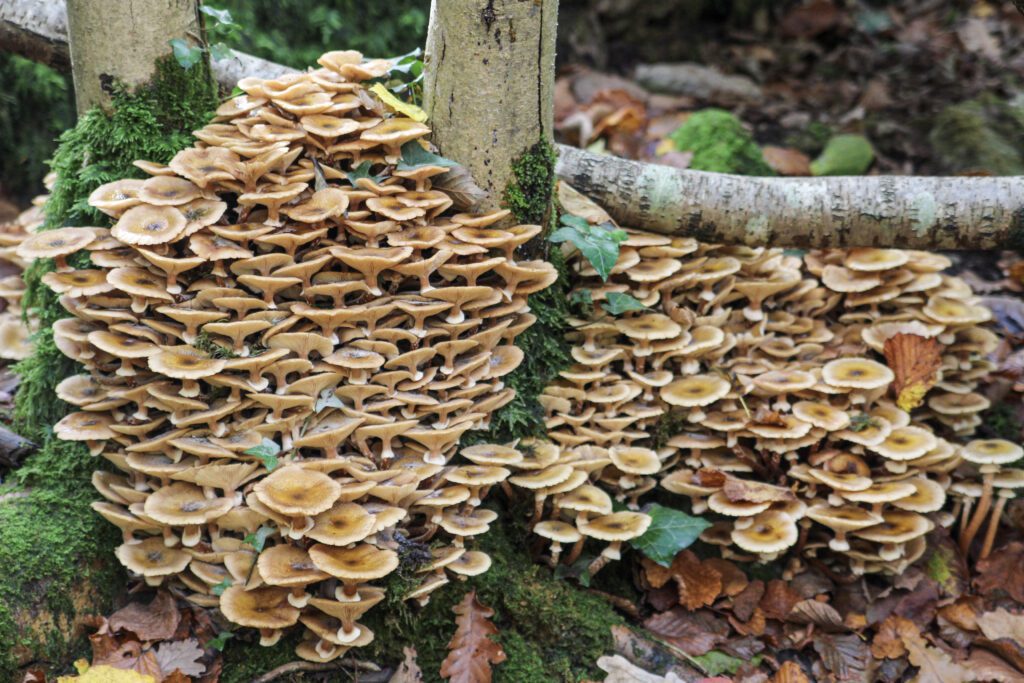
Everyone agrees, it is an outstanding mushroom season. The dry summer and the warm wet autumn have created the perfect conditions for these mysterious forms which spend most of their lives living underground. Quietly, but with ruthless effectiveness, they influence and shape the growth of the trees in the wood.
But, what is a mushroom? The people living in Nowhere a century and a half ago would distinguish between mushrooms (which they could eat) and toadstools (which they could not). Learning how to tell them apart was (and is) very important for mushroom foragers. Their children would have been taught that if they were not certain, they should leave well alone. Still good advice, today.
To a mycologist (a biologist of fungi) the term toadstool is not used, and the term ‘mushroom’ is used to describe the fruiting bodies of all these fungi.
![Bracket fungus on the old beech tree in Nowhere Wood. [Photograph: Pat Gilbert]](https://blog.neilingram.co.uk/wp-content/uploads/2025/10/c1ab4241-025b-4d19-bc0d-1c0166ed0e24-1024x461.jpg)
So, this wonderful bracket fungus is still called a mushroom by biologists.

Which fungi do not produce mushrooms? Well, yeasts are single-celled fungi that do not produce mushrooms. They often grow on the surface of fruit and help to turn apples into cider. Moulds and rusts are also fungi that do not produce mushrooms. They form fuzzy or powdery growths that spread quickly.
![Yeasts and other fungi on fallen apples in Tendlewood Park. [Photograph: Neil Ingram]](https://blog.neilingram.co.uk/wp-content/uploads/2025/10/IMG_4147-2-1024x768.jpg)
Moulds play an important role in helping to break down fruits in the orchard, releasing nutrients back into the soil.
What are mushrooms for? The photograph at the top of the page shows the gills of the mushroom, under its surface. The gills make and store spores, which blow away in the wind. Spores can settle and grow into new fungi.
- Imagine what would the world be like without fungi.
Being and becoming in Nowhere Wood
Also see:


